How to Create a Living Wall to Maximize Your Outdoor Space
Growing vertically expands your plant possibilities—and adds major interest to your garden.
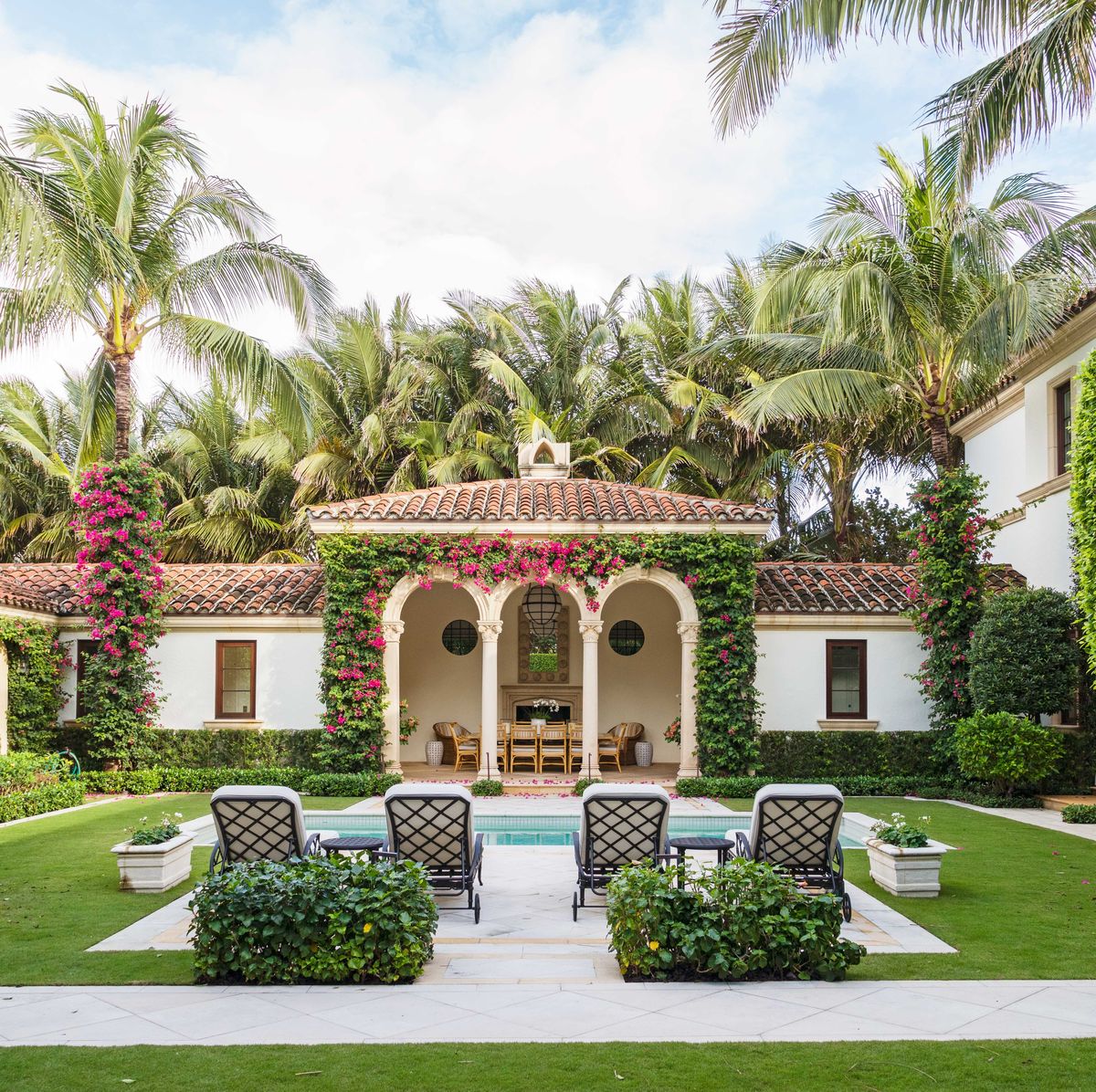
Living walls, also called vertical gardens or plant walls, are a surefire way to add visual interest to your home. They seamlessly blend interiors with verdant gardens and outdoor rooms to foster a more peaceful and biophilic design. Landscape architect Meg Whitmer feels like she’s stepping into a garden every time she walks in a room with a plant wall and takes a deep breath: “It just feels like the air is automatically fresher.”
Not to mention, these living walls act as works of art. Arranged like a masterpiece on the wall, curly, flat, broad, and heart-shaped leaves contrast with finely textured, fern-like wisps. Bold tropical leaves play off soft, pale-green delicate fronds. Colors from fleshy rosette topicals pop as daring accents. “Layered textures and colors start to create paintbrush movements on a canvas,” Whitmer says.
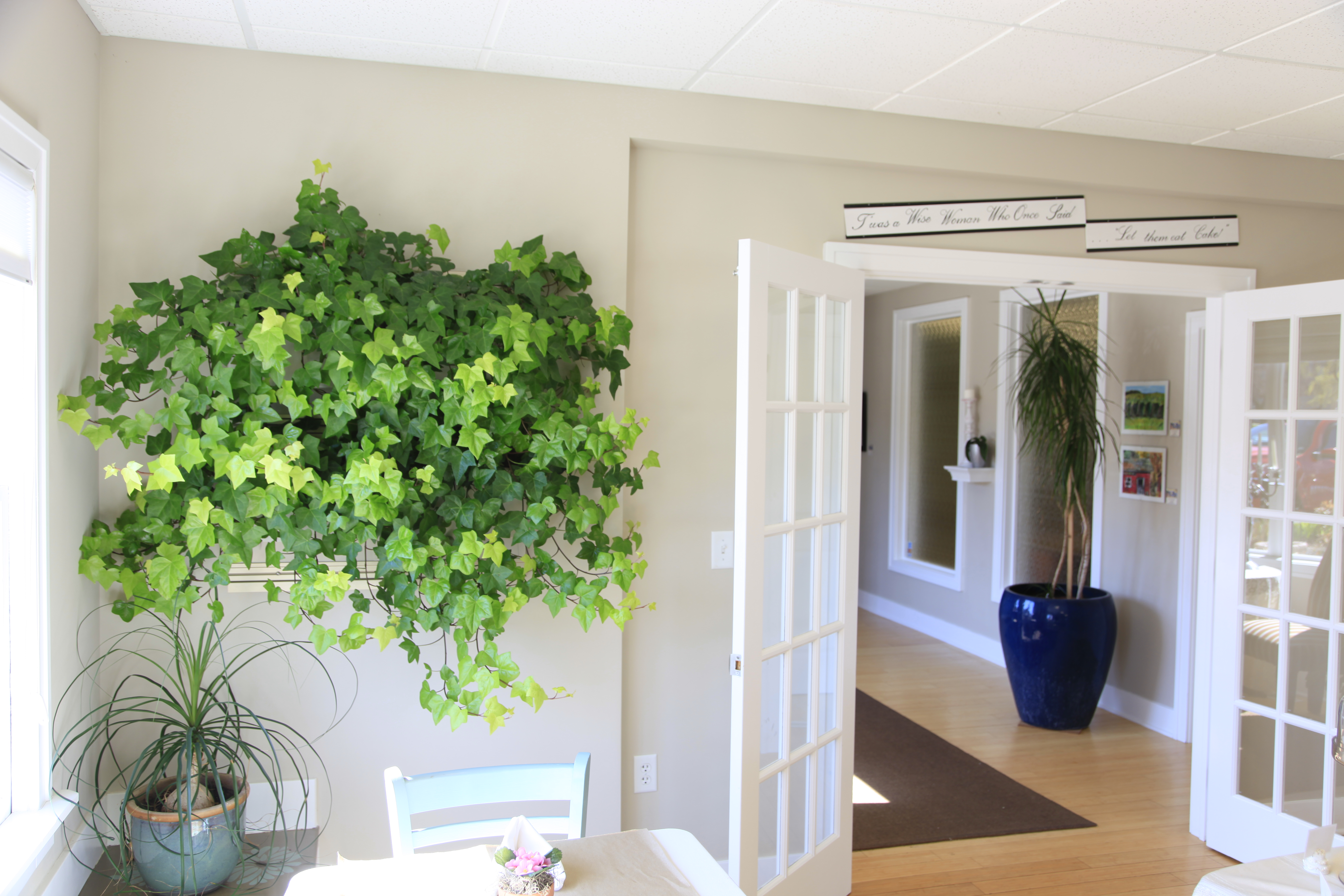
She saw her first exterior living wall years ago at the Salvador Dali Museum in St. Petersburg, Florida. “The wall was huge—maybe 30 feet long and 15 feet high. It’s a work of art in the way it is designed—an entire sketch in live plants.”
According to Whitmer, a lot of people assume plant walls are easier than traditional gardens. “But they’re really not easier or harder—they’re just compressed into the wall, so they have different considerations,” she says. If you’re ready to go green and create your own living wall, read on for a few considerations.
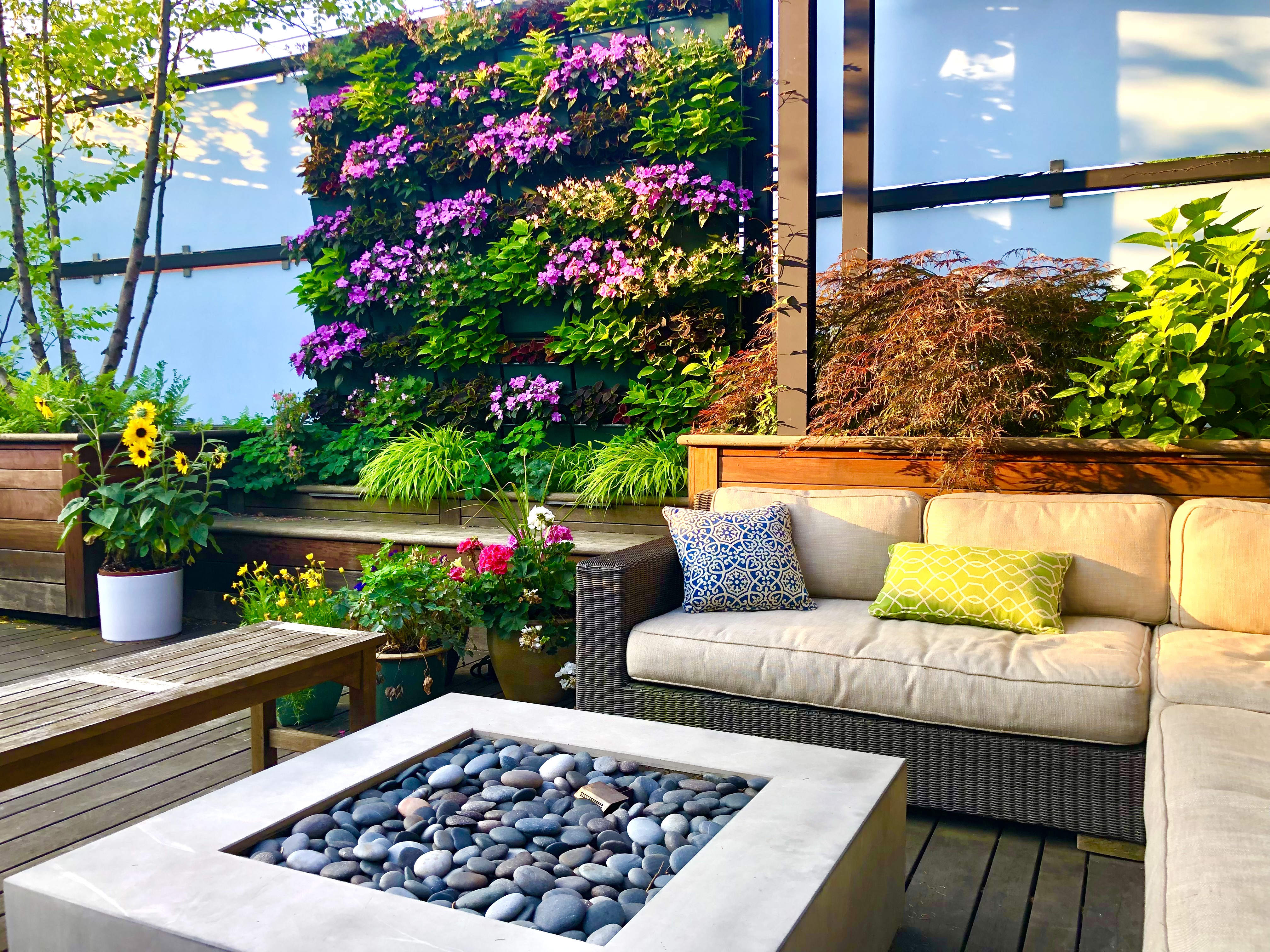
Choose Your Location
Location is the first consideration when designing a living plant wall. Dave MacKenzie, general manager of the Michigan-based LiveWall, helps residential and corporate clients find the perfect green-worthy space. He says it depends on their motivation and vision. “Sometimes people are driven by aesthetics; they want to green up a blank wall. If they’re in an urban environment, they may not have room for a garden.”
Other times, he says, they have a goal in mind, like they want to grow herbs in their kitchen, or they want to dampen the sound in a space. Sometimes they want to improve the air quality in a space.
According to MacKenzie, there are few limitations when it comes to location. Plant walls can be applied to any surface, including concrete, brick, wood, or plaster. They can elevate interior and exterior spaces. And while lighting is critical for plant health, suboptimal natural light can be supplemented with artificial light.
Select Plants for Your LiveWall
For LiveWall, what started as a nursery grew into green architecture almost 20 years ago. First, they tackled green roofs. Then they moved into plant walls. “At the beginning, we sourced every kind of plant we thought could work. Our goal was to compile a selection that is resilient and lasting,” says MacKenzie.
By process of elimination, they came up with a plant list menu, which mostly features tropical plants. “We found that for interior walls, tropical plants are low-moisture and easy to care for.”
Under the umbrella of “resilient and lasting,” MacKenzie and his team categorize plants based on moisture and light requirements. “More than whether a plant is an annual, perennial, or tropical, it matters if they like low, medium, or bright light—and that they have compatible water requirements. You don’t want to group plants that need to be constantly moist with those that only have to be watered once a week.”
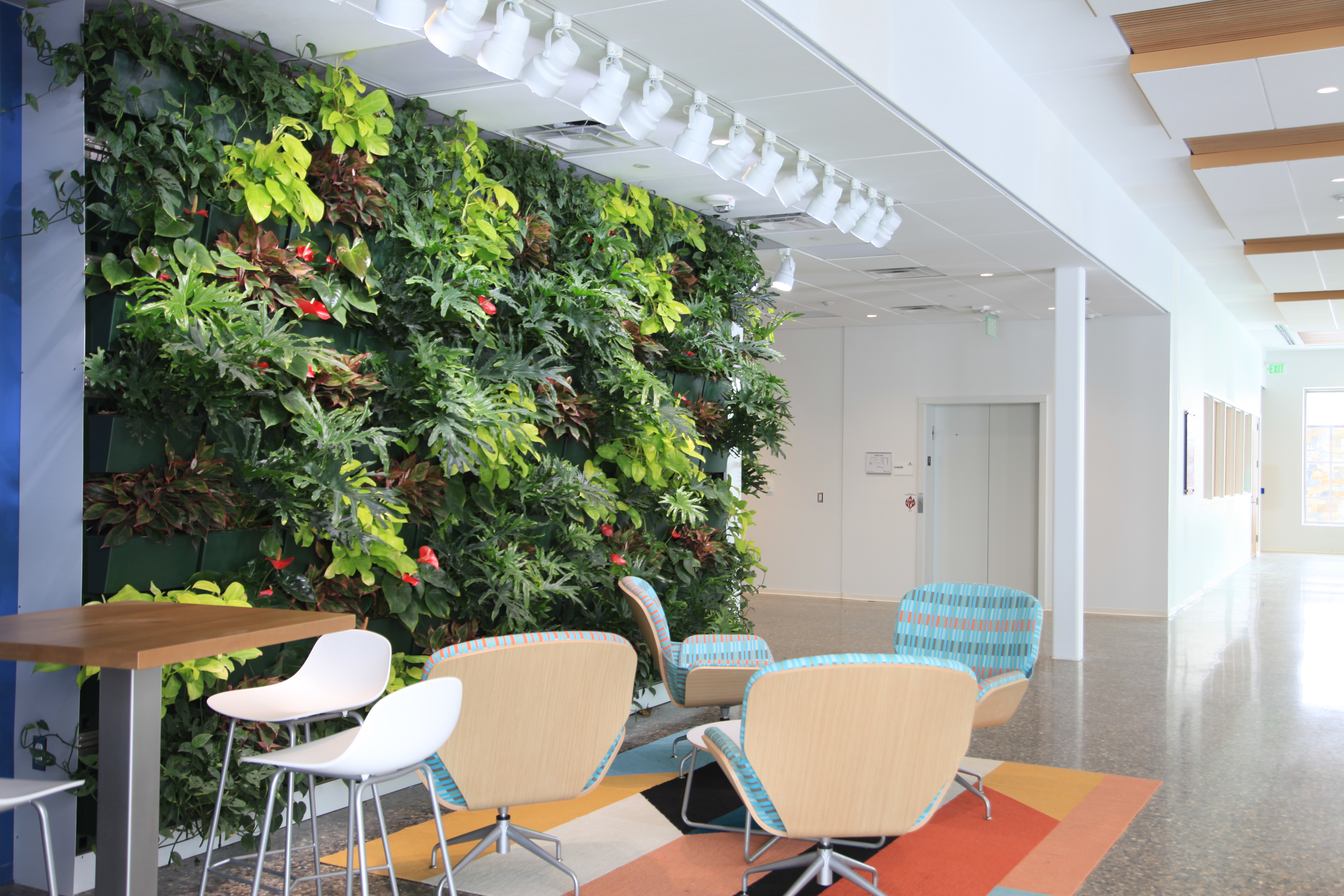
Whitmer worked with a client in Tampa who initially wanted a plant wall for a second-floor mezzanine wall above a wine bar. “Accessibility and maintenance were going to be a problem,” she says.
They opted to work with Ambius, a Pennsylvania-based company that creates preserved moss walls. Unlike living moss that requires high light and humidity, Ambius’s moss, preserved with non-toxic glycerol and natural food dyes, requires minimal maintenance and no natural light.
“Visually, it was stunning,” Whitmer says. “Some moss is soft and fluffy, and some is flat and textured. As art, it’s multi-dimensional with tones and shades of greens—soft greens, gray greens, blue greens that create an image, even if it’s abstract.”
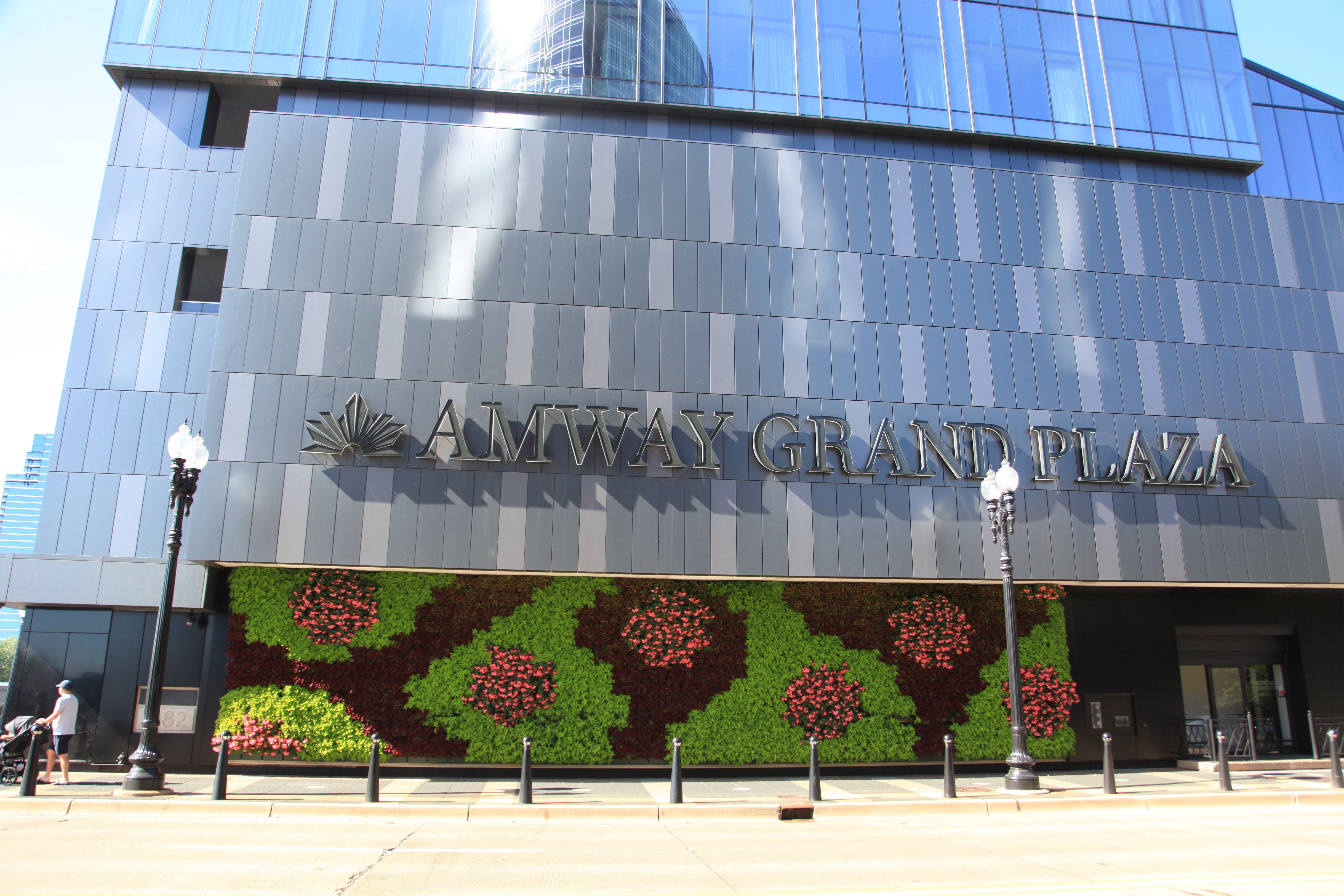
Typically, living walls consist of a grid of self-contained panned planters with a water reservoir and growing medium. The frame structure is made from tracks, mounting racks, and a combination of vertical and horizontal rails that hold the planter boxes.
MacKenzie says some people like to see the planters; “others just want the planters to be smothered by the plants.”
Whitmer believes that when it comes to plant walls, there is no such thing as Xeriscaping—a style of landscaping that requires little maintenance. “It’s is a commitment. Just like if you get a pet, you have to water and feed it. If you plant a garden, you have to water and feed it. Anything that lives requires a commitment for care. But if you do, it will give you a lot of rewards.”
Robin Sutton Anders (2024, April 29). How to create a living wall to maximize your outdoor space.
Veranda. How to Create a Living Wall – Tips for Growing a Vertical Garden (veranda.com)
